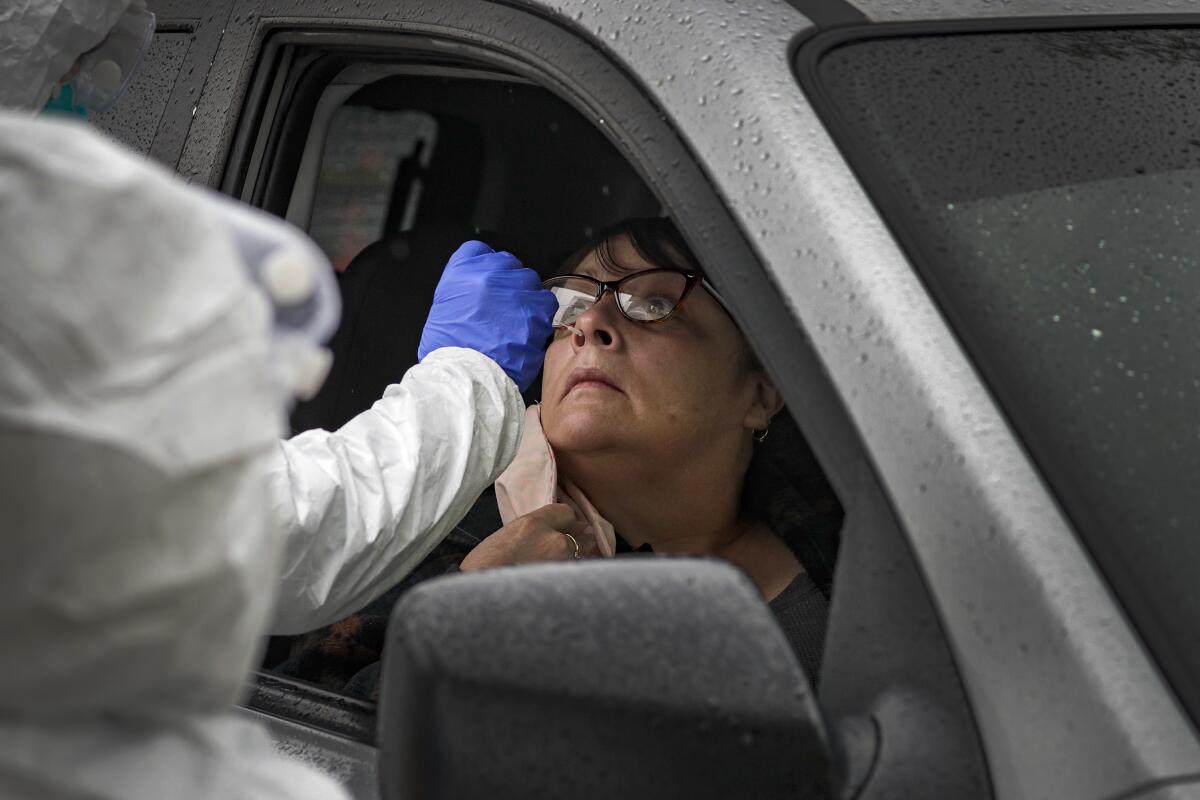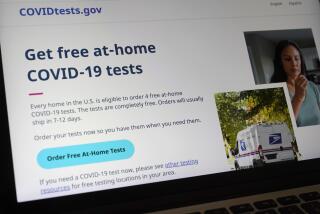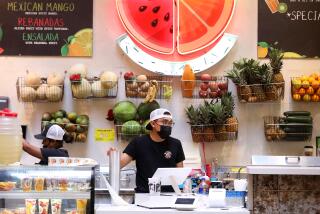Column: Three COVID-19 tests for three different Californias

You’ve gone through one coronavirus nasal-swab test, you’ve gone through them all.
The panicked rush to get an appointment. The hours spent cataloging your past couple of days — every person you met, every place you visited, every little cough or sniffle — after you booked it.
Then, the actual test — not painful, but very uncomfortable. Imagine snorting water up your nose, except you can’t blow it out and the swab touched a part of your body you never knew existed. Then you get to do the other nostril.
Next, the wait. That terrible, horrible wait. Finally, the results.
It all plays out like a twisted version of “Groundhog Day,” but with none of the humor.
There have been more than 28 million COVID-19 tests administered in California in 2020, which means sore schnozzes have united Californians like no event since, well, anything. Or so I wish.
Because this is a state with inequity baked into our bones, and every COVID-19 test tells a tale of a different California.
I’ve seen this unfold up close with three examinations over the past six months.
The first happened in June, after I spent two days covering Black Lives Matter protests in Santa Ana and Anaheim attended by thousands. I made sure to practice proper protocol — social distance, wear a mask, sanitize hands constantly. Each night, I returned home, took off my clothes in the garage, took a shower, then tried to embrace my wife, who runs a restaurant.
Nice try. She insisted I quarantine until I tested negative — not even a peck on the cheek until then.
Orange County was just about to get its first coronavirus wave, so testing was inadequate because local officials didn’t believe then that coronavirus was a thing (a lot still don’t). I tried to schedule a visit with my insurance provider, Kaiser Permanente, but it refused. Only people with COVID-19 symptoms were eligible, the same criteria for all free public tests in Orange County at the time.
So I found a walk-in clinic in Tustin that administered tests to anyone for $175. Today, I know now that you should wait a couple of days after possible exposure to COVID-19 before taking one — but back then, I just wanted to be back in the arms of my wifey as soon as possible.
I was able to make an afternoon reservation the day I tried. The procedure was simple: check in and pay, then return to my car and wait. It took less than 10 minutes. There were maybe 10 other people in their cars waiting. All seemed as inconvenienced as me.
A nurse came and asked me to pull down my mask so that only my nostrils were exposed. As she swabbed, the nurse asked why I wanted a test if I wasn’t experiencing any symptoms. I explained how I attended the Black Lives Matter rallies and wanted to be careful.
She smiled.
“Protest in place,” the nurse, who was Black, said, then left.
The clinic told me I’d get results within a week via phone call. It took 10 days. Negative.
Recently, I checked to see if the walk-in clinic had any available slots. They haven’t had any available times for weeks.
The second and third COVID-19 tests I experienced happened on the same day, after a COVID scare at my wife’s restaurant. The timing couldn’t have been worse: Black Friday. She shut down her restaurant for four days despite the financial hit, because it was the right thing to do — for the safety of her employees and customers.
Orange County now offers multiple locations with free tests. Kaiser now allows them for people who think they had been exposed to someone who was COVID-positive, although the results take five days. We wanted instant peace of mind, so I sprung for an early Christmas present for my wife: a rapid test with results in 24 hours. I would take the Kaiser one, because I’m a cheapskate.
The location for her health check was a boutique rehab clinic in Newport Beach, near John Wayne Airport. The people there drove up in Land Rovers and Mercedes-Benz sports coupes. They wore designer sunglasses and Chanel. Some didn’t even bother with masks as we waited in line.
The conversations among this crowd sounded like Sunday brunch along PCH. One person boasted that he tested weekly to be able to live life as if no pandemic existed. Others were on their way to vacation — Hawaii, Cabo San Lucas, Europe — and needed a negative result to board their flight.
“All these people here are taking it to relax,” my wife grumbled. “I’m here to try to make sure I can work.”
We got her results before midnight: negative. I paid the same amount for this 24-hour test — $175 — that I did in June for mine.
It took about 20 minutes between our arrival at the Newport Beach clinic and my wife’s test, so I expected the same speedy process at the Kaiser Permanente campus in Anaheim for my turn. Along the way, I noticed that the parking lot at a Fry’s Electronics store was packed, and made a note to swing by for some early Christmas shopping.
When I arrived at Kaiser, about 20 people waited six feet apart to enter the main building. Not bad, I thought.
Wrong line — it was for flu shots. The COVID-19 test was at a drive-through in a nearby parking lot.
The Fry’s Electronics one. The store had closed in March, and Kaiser now used it as a staging ground.
Oy vey.
The time between me arriving at the end of the line to my test: two and a half hours. Kaiser workers in masks and face shields roamed around cars like In-N-Out workers trying to expedite orders. The wait was so long that I finished an entire issue of the New York Review of Books. Entire geological ages pass before you can do that.
I’d look up from reading book reviews every couple of minutes to check out my fellow test-takers. Everyone seemed fatigued, scared — the opposite of my two previous experiences.
When it was finally my turn, I drove into a parking structure that separated Fry’s from Kaiser. I noticed a sign that asked people to turn off their cars and put their keys on the dashboard. I asked the kind worker who checked me in to explain the rationale.
Turns out more than a few people would just step on the brakes instead of place the car in park before undergoing the test. The shock of it triggered an involuntary reflex that saw their foot release the brakes.
Front-line workers, indeed.
I was told my test results would be available in five days. They were available in three: negative.
As coronavirus rates continue to explode, I’ll most probably have to take more tests. So will you. If only this moment could unite California once and for all.
If only.
More to Read
Start your day right
Sign up for Essential California for news, features and recommendations from the L.A. Times and beyond in your inbox six days a week.
You may occasionally receive promotional content from the Los Angeles Times.







